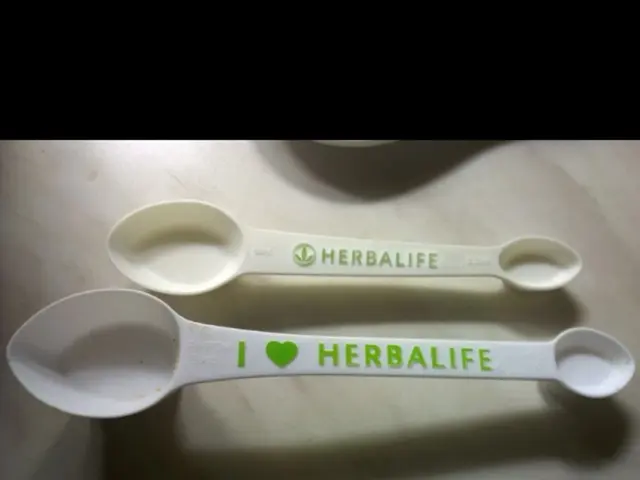Understanding the Cause of Your Infant's Diaper Rash
Navigating the worrisome world of diaper rash as a parent can be a bumpy ride. No one enjoys witnessing a little one battling a sore, red bottom, but it's a common scenario for many caregivers.
The go-to adorable, non-profit hub, Cleveland Clinic, is here to help guide you through this occasionally overwhelming experience. We don't endorse non-Cleveland Clinic goods, but they're here to provide you with valuable insights.
When you're faced with a red, sensitive-looking derrière during diaper duty, it's essential to understand the root causes and best practices to nurse the problem back to health. Often, it's the basics of diaper care that are at the heart of diaper rash. But sometimes, it might be tricky to pinpoint the source of the issue, especially if it's related to food or skin irritations.
Getting down to the nitty-gritty, pediatrician Jacqueline Kaari, DO, weighs in on spotting the signs, averting diaper rash escalation, and identifying potential allergies as a culprit.
Cracking the Diaper Rash Code: First Steps
According to the American Academy of Pediatrics, half of all babies between four and fifteen months old will have diaper rash at least once every two months. So you're far from alone if you find yourself and your child grappling with an occasional diaper rash outbreak.
"It's a quality-of-life issue for the child who is miserable, and for the parents who are desperate to help but are not getting any shut-eye," Dr. Kaari stresses.
To begin, scrutinize the most common cause: a baby staying in a wet or soiled diaper for too long. Pay close attention to a few diaper care fundamentals before exploring other possibilities:
Critical Diaper Hygiene Tips
Research suggests that diaper rash occurs less frequently with disposable diapers, but the most crucial factor is consistently changing them.
Before suspecting allergies as the culprit, review the following:
- Swiftly swap out your baby's wet or dirty diaper. "This is the ultimate diaper rash prevention," Dr. Kaari asserts. Be extra cautious if your baby deals with diarrhea, or if you (or nursing moms) are on antibiotics. Antibiotics can lead to loose stools and additional irritation.
- Protect the skin with a shielding product. Opt for diaper creams with zinc oxide or petroleum jelly. Apply generously at each diaper swap.
- Provide diaper-free time at home. Exposure to fresh air can speed up healing.
Keep Your Eyes Peeled for Allergies and Extra Irritants
Besides the obvious, there are several other factors that could leave your baby with a red bottom:
1. Irritating diapers or wipes. A particular brand of disposable diapers or wipes might irritate the skin.Advice: "Whilst they may eventually outgrow the irritant, the best strategy is trial and error - eliminate one variable at a time," Dr. Kaari advises. Opt for water wipes or a delicate cloth with water to clean the area. If the bottom appears red, avoid using standard baby wipes if they cause further irritation.
2. Scent-laden detergent. Detergent used for washing cloth diapers may be to blame, but if this is the issue, your child is likely to display a rash elsewhere as well.
Advice: Pick fragrance-free and dye-free detergents to wash your baby's diapers and clothes. Stay loyal to one brand if you suspect soap might be causing irritation in your child's skin.
3. Unpleasant heat. Hot weather, overdressing a child, or extended exposure to the sun can lead to a heat rash in the groin area. However, the rash is likely to appear elsewhere as well, particularly on the neck, armpits, and elbow creases.
Advice: Ensure your baby remains warm yet not overheated. In cold weather, remove layers when moving from indoors to outdoors or vice versa. In summer, a simple diaper is usually adequate protection, but don't forget sunscreen and shade when basking in the sun. And pack a spare outfit for air-conditioned spaces.
4. Unwelcoming foods. Your baby might experience food sensitivity or an allergy, but additional symptoms, such as blood in the stool, hives, swollen lips, or wheezing, are probable as well.
"For example, a child reacting adversely to cow's milk may also experience blood in the stool, hives, swollen lips, and/or wheezing," says Dr. Kaari.
Advice: To forestall food allergies, medical professionals suggest steering clear of milk before the age of 1 and eggs before age 2.
When to Call for Backup
Despite your best efforts, a child can still develop a diaper rash, either slowly or suddenly. Gently clean the area with soap and a gentle cloth, without wiping or rubbing, and ensure it's completely dry before applying a fresh diaper.
Call your pediatrician if the rash:
- Persists for three days or intensifies.
- Maintains a red-dotted appearance rather than an uninterrupted red color, suggesting a potential yeast infection.
- Displays broken skin that is not whole.
- Accompanies a fever.
"If you have the slightest doubts, bring them in to consult with their pediatrician," Dr. Kaari reassures, adding, "I like to encourage my parents to do so!"
- In navigating diaper rash as a parent, it's important to consider the role of food allergies as a potential factor, as mentioned by Dr. Kaari.
- When seeking diaper care solutions, one crucial step is to ensure you're using gentle, non-irritating wipes and diapers for your baby's sensitive skin.
- A child's diet plays a significant role in determining their overall health and wellness, including skin-care, and parenting strategies should focus on maintaining a balanced diet.
- Proper nutrition, a key aspect of health-and-wellness, is essential for babies to help prevent diaper rash and other health issues.






